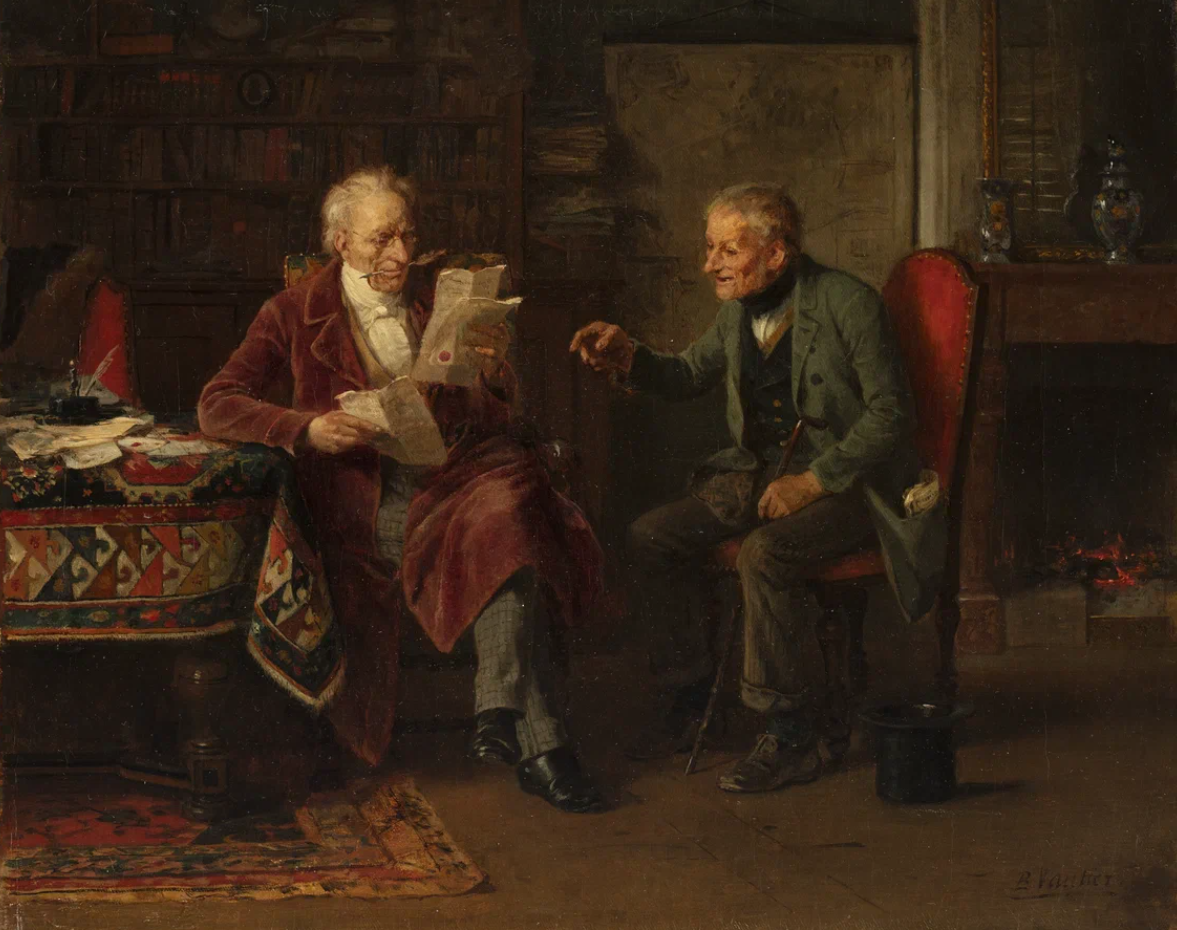Marc Louis Benjamin Vautier the Elder. At the Advocate’s Office (At the Notary’s Office). Circa 1870.

Vautier the Elder's painting captures the office of a 19th-century notary in the Rhine Province, which is now part of Germany. In the German states of that period, two legal models governed notarial practice: the Prussian system and the French system.
Within the Kingdom of Prussia and its constituent states within the Prussian sphere of influence, including Saxony, Bremen, and Lübeck, the prevailing model permitted notaries to simultaneously practice as attorneys. Prussian notaries were regarded as private legal advisors who drafted documents, including those for court proceedings.
However, in territories under French jurisdiction between 1801-1815 (later incorporated into Prussia's Rhine Province), the notarial profession was strictly limited to notarial functions. French notarial law defined notaries as public officials appointed to formally authenticate contracts and legal instruments. Unlike their Prussian counterparts, notaries in the Rhine Province were expressly prohibited from engaging in any other legal practice, including advocacy work.
Following the annexation of Rhineland territories in 1815, Prussian laws were to be implemented throughout these regions, yet the notarial profession retained its autonomous regulation. In 1888, Prussia enacted legislation permitting notaries to practice law in all territories without exception, though only a small fraction of Rhineland notaries exercised this right.
The painting meticulously renders a notary's office interior, prominently featuring one of the profession's essential tools: ink. For 19th-century notaries, ink held particular significance as it was used for drafting notarial deeds and executing certified signatures. Initially an expensive commodity produced through complex manufacturing processes, ink only became more accessible by mid-century through new production methods using affordable materials. According to German notarial tradition, those who passed qualifying examinations and took their oath received ceremonial parchment, ink, and a quill as symbols of office.
The painting notably omits another essential element of notarial practice - the notary’s seal. Documents required the notary to affix their seal for validation.
In the Middle Ages, notaries used signet rings rather than traditional seals. By the 14th century, it became standard notarial practice to imprint a personal mark beside the signature using such a ring. Later, alongside rings, official notarial stamps were introduced.
By the early 19th century, Germany had phased out the use of signet rings in favor of official embossed seals. A German notary's seal from the 19th to early 20th century typically contained: the notary's name and title; their city or notarial district.
Rhineland notarial seals differed slightly from Prussian ones - while both bore textual information, Prussian seals additionally featured the Prussian eagle coat of arms.
Marc Louis Benjamin Vautier the Elder actively experimented with various mediums, including oil, gouache, and India ink. The ink used by the master refers to a pigment prepared from soot with added water and a binding agent. Drawings executed in any variety of ink exhibit lightfastness—the ability of pigments to retain their color when exposed to light.